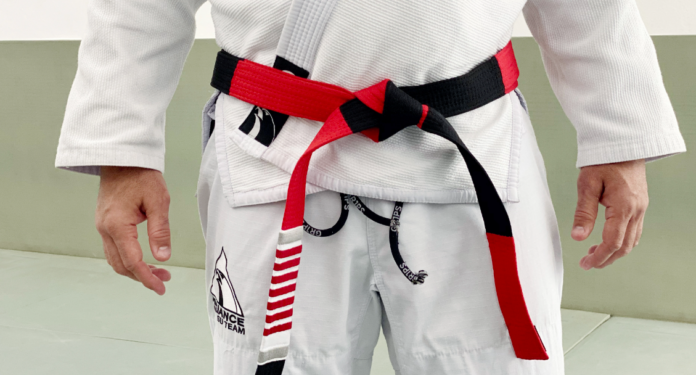
If you are a Brazilian Jiu-Jitsu practitioner, you probably know that the adult belt system is more than just a way to indicate your skill level. It is also a reflection of your dedication, passion, and journey in the art. And among the various belt ranks in Jiu-JItsu, there is one that stands out as the rarest and revered: the coral belt BJJ rank.
The red and white belt is a prestigious rank that only a few elite practitioners can achieve. It represents a high level of mastery, wisdom, and honor in BJJ. It is also a symbol of one’s contributions and legacy in the art.
But what exactly is a coral belt? How many coral belts are there in BJJ? W are the requirements and criteria to attain this rank? Who are some of the prominent and influential coral belts in BJJ history? And what does it mean and entail to be a coral belt?
These are some of the questions that many BJJ, MMA, and grappling athletes may have about this elusive and coveted rank that exceeds the white, blue, purple, brown belt and even Jiu-Jitsu black belt ranks we are used to. In this article, we will provide valuable information and insights to help you understand and appreciate the essence of coral belt BJJ.
Understanding the Coral Belt in Brazilian Jiu-Jitsu
The coral belt is a rank in the BJJ ranking system that is depicted by a red and white coral belt. It is also known as the seventh-degree coral belt or the master’s belt. It is one of the highest ranks in BJJ, surpassed only by the red-and-black belt (8th-degree) and the red belt (ninth- and tenth-degree).
The origin of the coral belt can be traced back to the founders of BJJ: Carlos Gracie Sr. and Helio Gracie. They adopted the belt system from Judo, but modified it to suit their own style and philosophy. They also added new colors and degrees to distinguish themselves from other martial arts.
The coral belt was initially reserved for the Gracie family members who had reached a certain age and experience in BJJ. Later, it was extended to other practitioners who had made significant contributions to the art and had earned the respect and recognition of their peers.
The coral belt is not just a rank that indicates technical proficiency or competitive success. It is also a symbol of one’s dedication, passion, and commitment to BJJ. It reflects one’s lifelong pursuit of learning, teaching Jiu-Jitsu, and spreading the martial art of BJJ.
The Rarity of Coral Belts: Unveiling the Numbers
One of the reasons why the coral belt is so prestigious and coveted is that it is extremely rare and exclusive. There are only a handful of active coral belts in existence, and they are among the most respected and influential figures in Brazilian Jiu-Jitsu.
It is hard to estimate the exact number of coral belts in BJJ, as there is no official or centralized registry or database for them. However, based on various sources and reports, we can make some educated guesses.
According to BJJ Heroes, there were about 50 active coral belts in 2016. However, some of them have since passed away or been promoted to higher ranks. As of 2021, there are likely less than 40 active coral belts in BJJ.
To put this number into perspective, consider that there are thousands of active black belt holders in BJJ worldwide. According to IBJJF, there were over 10,000 registered black belts in 2019, a number which has significantly risen in the past 3 years.
This means that coral belts make up less than 0.1% of all black belts in BJJ. They are truly rare gems in the art.
BJJ Coral Belt Requirements and the Path to Jiu-Jitsu Coral Belt Attainment
So how does one achieve a coral belt in Brazilian Jiu-Jitsu? What are the BJJ coral belt requirements and criteria?
When you are a white belt, blue belt, and even purple belt, this rank might seem unachievable. To be honest, even some BJJ black belts feel they will never get to a white and red or black and red coral belt.
The answer about coral belt requirements is not simple or straightforward, as there are different factors and variables involved. However, we can identify some general guidelines and prerequisites that apply to most cases.
First of all, practitioners must be black belts for at least 31 years before being eligible for coral belt promotions. This means that one must have started training BJJ at a very young age (usually before 20) and have maintained a consistent practice throughout their life.
Secondly, one must have extensive teaching experience and have produced high-level students who have excelled in BJJ. This means that one must have dedicated themselves to sharing their knowledge and skills with others and have contributed to the growth and development of the art.
Thirdly, one must have made significant contributions to BJJ beyond teaching or competing. This means that one must have been involved in promoting, organizing, innovating, or researching aspects of BJJ that have benefited the community at large.
Fourthly, one must have earned the respect and recognition of their peers and seniors in BJJ. A coral belt level means that one must have demonstrated ethical conduct, integrity, humility, and leadership qualities that have inspired others.
Of course, these are not absolute or definitive rules for attaining a coral belt. There may be variations or exceptions depending on different lineages or organizations. For example, some may require more or less time as a black belt before being eligible for a coral belt promotion. Some may also consider other factors such as lineage history, personal relationships, or political affiliations.
Ultimately, achieving a coral belt is not something that can be planned or expected. It is something that can only be bestowed by one’s instructor or mentor after decades of dedication, passion, and commitment to BJJ.
Prominent Figures and Influential Coral Belts in BJJ History
Throughout the history of BJJ, there have been distinguished practitioners who have reached the rank of coral belt. However, some of them stand out as more prominent and influential than others due to their accomplishments, impact on BJJ, and current belt ranks.
Here is a list of BJJ coral belt holders who have made significant contributions to the Gentle Art:
- Carlos Gracie Jr.: The son of Carlos Gracie Sr., he is considered one of the most important figures in modern BJJ. He founded Gracie Barra Academy (one of the largest teams in BJJ), IBJJF (the main governing body for sport BJJ), Gracie Magazine (the leading publication for BJJ news), among other ventures.
- Pedro Sauer: One of the most respected instructors in BJJ, he is a student of Helio Gracie and Rickson Gracie. He has taught thousands of students worldwide through his association (Pedro Sauer Brazilian Jiu-Jitsu Association) and his academy (Pedro Sauer Academy).
- Royce Gracie: The son of Helio Gracie, he was the first champion of UFC. He shocked the world with his victories over much larger opponents using his BJJ skills. He popularized BJJ globally and inspired generations of MMA fighters.
- Jean Jacques Machado: One of the most decorated competitors and instructors in BJJ, he is a cousin of the Gracie family and a student of Carlos Gracie Jr. He won multiple world titles and ADCC titles and produced many champions such as Eddie Bravo, Joe Rogan, John Danaher, and Chuck Norris. He also founded Jean Jacques Machado Brazilian Jiu-Jitsu Association and Academy.
- Fabio Santos: One of the pioneers of BJJ in America, he is a student of Rolls Gracie and Rickson Gracie. He competed in the first UFC event and won several tournaments in Brazil and abroad. He also founded Fabio Santos Brazilian Jiu-Jitsu Academy and Association and trained many students such as Dean Lister, Saulo Ribeiro, and Xande Ribeiro.
- Mauricio Gomes: One of the most influential instructors in Europe, he is a student of Rolls Gracie and Rickson Gracie. He was one of the famous “Famous Five” who received their black belts from Rolls. He also founded Mauricio Gomes Brazilian Jiu-Jitsu Academy and Association and trained many students such as Roger Gracie, Braulio Estima, and Kyra Gracie.
- Francisco Mansor: One of the oldest living coral BJJ belts, he is a student of Helio Gracie. He has over 60 years of experience in BJJ and has taught thousands of students worldwide. He also founded Kioto Brazilian Jiu-Jitsu Academy and Association and trained many students such as Renzo Gracie, Rodrigo Medeiros, and Ricardo Almeida.
- Romero “Jacare” Cavalcanti: One of the most successful coaches in BJJ history, he is a student of Osvaldo Alves and Rolls Gracie. He founded the Alliance Jiu-Jitsu Team (one of the most dominant teams in BJJ) and has produced many champions such as Fabio Gurgel, Marcelo Garcia, Lucas Lepri, Cobrinha, and Gabi Garcia. He also founded Romero Cavalcanti Brazilian Jiu-Jitsu Academy and Association.
- Renzo Gracie: the latest of the Gracie family to receive the honor of the coral belt BJJ rank. Renzo was promoted a few months ago by Rickson Gracie. He is the man behind the Renzo Gracie New York Academy, a.k.a. the blue basement, which has produced some of the best competitors and instructors in the sport, the like of John Danaher, Matt Serra, Ggordon Ryan, Gary Tonon, etc.
These are just some examples of prominent coral belts who have shaped BJJ history. There are many more who deserve recognition for their achievements and contributions.
Unveiling the Meaning and Value of the Coral Belt in Jiu-Jitsu
As we have seen so far, achieving a coral belt in BJJ is not an easy feat. It requires years of suffering at the colored belts ranks, decades of hard work, dedication, passion, and commitment to BJJ. It also requires a high level of technical expertise, teaching experience, ethical conduct, and peer recognition.
But what does it mean and entail to be a coral belt? What are the responsibilities and expectations that come with this belt rank?
The coral belt is not just a symbol of mastery, wisdom, and honor in BJJ. It is also a symbol of one’s legacy and impact on the art. Coral belts are the guardians and custodians of BJJ. They are the ones who preserve, transmit, and evolve the art for future generations.
As such, coral belts have a duty to uphold the core values and principles of BJJ. They must demonstrate respect, humility, integrity, and loyalty to their instructors, peers, students, and the BJJ community. They must also maintain a high standard of excellence and professionalism in their teaching and practice.
Moreover, coral belts have a role to inspire and motivate practitioners at all levels. They must share their knowledge, skills, and wisdom with others. They must also encourage, support, and guide their students and peers in their journey. They must also promote and spread BJJ to new audiences and regions.
Being a coral belt is not just a privilege or an achievement. It is also a challenge and a commitment. It is a lifelong pursuit of learning, teaching, and growing in BJJ.
Conclusion: Black Belt is Not the End
In this article, we have provided a comprehensive guide to coral belt BJJ rank. We have explained what a coral belt is, how many coral belts are there in BJJ, what are the requirements and criteria to attain this rank, who are some of the prominent and influential BJJ coral belts in BJJ history, and what does it mean and entail to be a coral belt.
We hope that this article has helped you understand and appreciate the essence of the coral belt BJJ rank. We hope that it has also sparked your curiosity and interest in this rare and revered rank.
If you are a BJJ practitioner going through the BJJ belt rankings and yearning to learn more about coral belt BJJ, we encourage you to engage with the BJJ community, share this article with your friends and peers, and continue your pursuit of growth and excellence in BJJ.
And who knows? Maybe one day, you will become one of the few elite practitioners who can wear the prestigious coral belt with pride and honor.


![Darce Choke Encyclopedia – Origins, Mechanics and Variations [2025] BJJ, choke, Brabo, BJJ Darce Choke, D'arce Choke, Darce BJJ Choke](https://bjj-world.com/wp-content/uploads/2017/11/JungPoirierLeeYahoo-218x150.jpg)







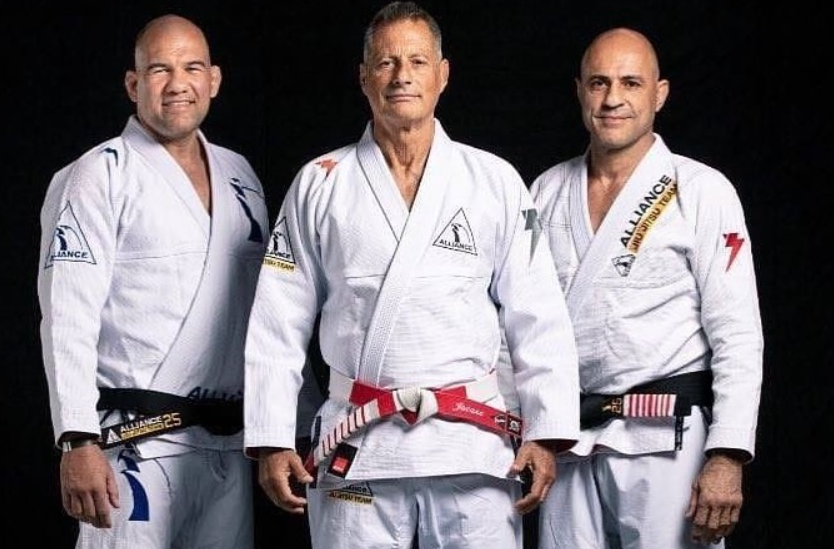
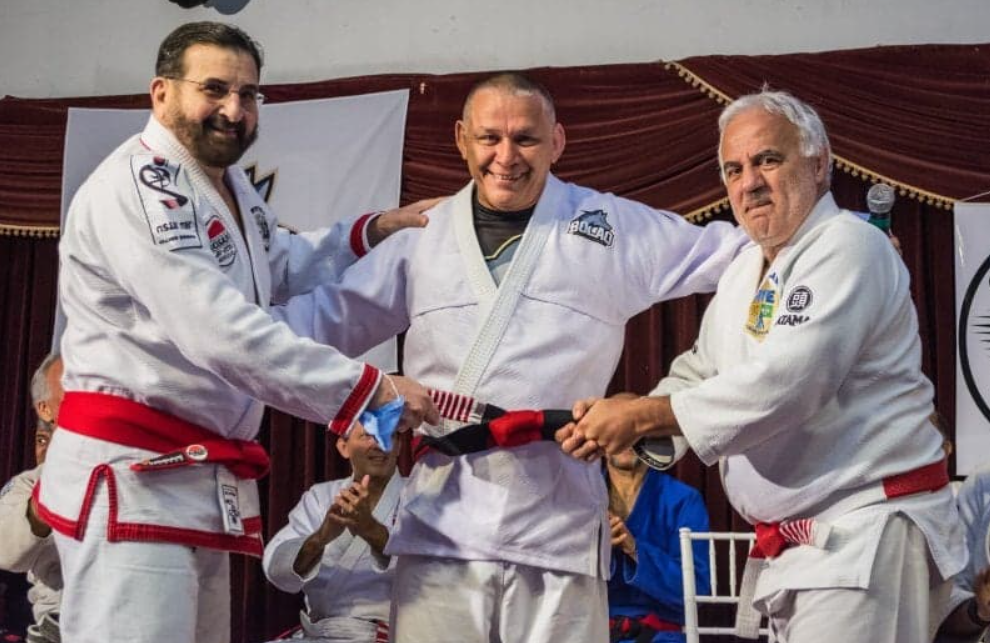
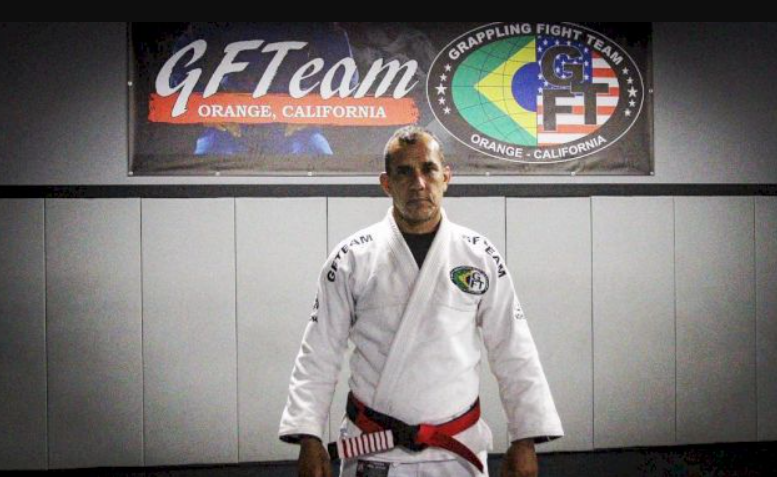
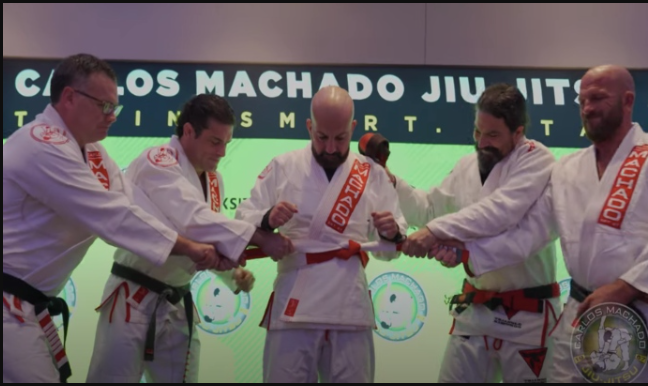
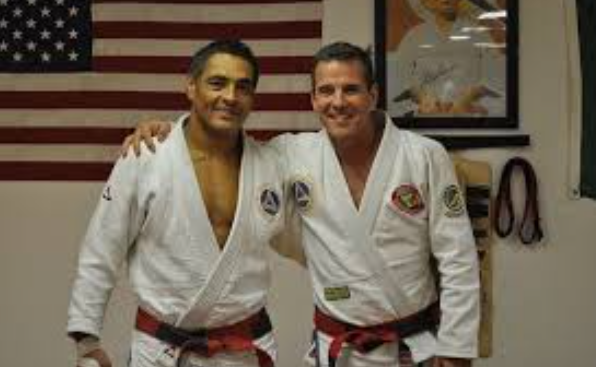
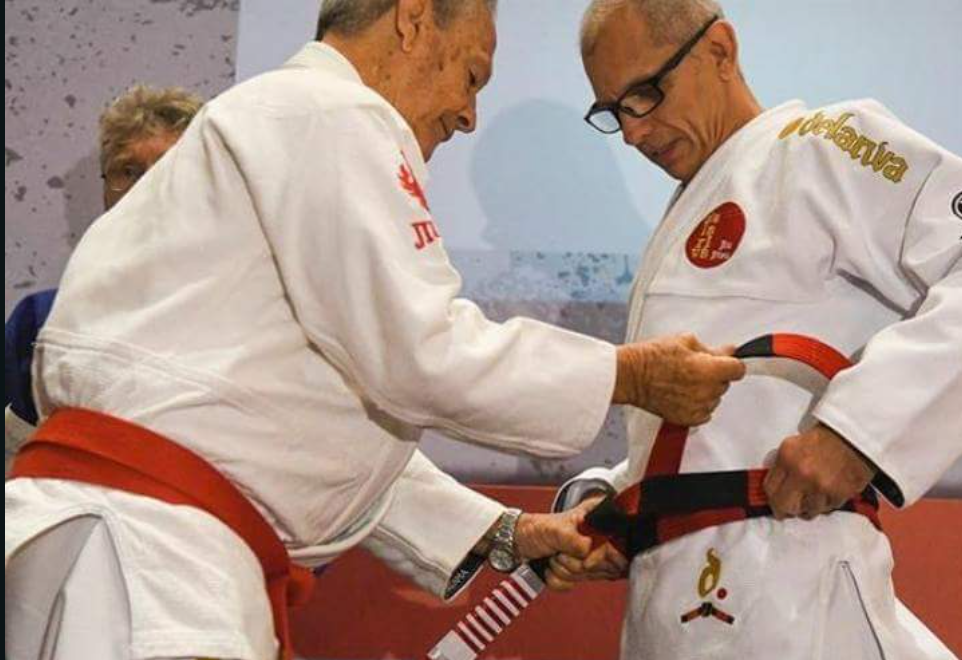



![Modernized Headquarters Passing Shawn Melanson DVD Review [2025] Modernized Headquarters Passing Shawn Melanson DVD Review](https://bjj-world.com/wp-content/uploads/2025/04/headquarters-passing-shawn-melanson-dvd-review-218x150.png)
![4 Weeks To A Better Guard Travis Stevens DVD Review [2025] 4 Weeks To A Better Guard Travis Stevens DVD Review](https://bjj-world.com/wp-content/uploads/2025/04/4-weeks-to-a-better-guard-travis-stevens-dvd-review-218x150.png)
![DONE! Gordon Ryan Retiring—and Danaher Might Not Be Far Behind! [2025] Gordon Ryan Retiring—and Danaher Might Not Be Far Behind!](https://bjj-world.com/wp-content/uploads/2025/04/LEG-GRABS-3-1-218x150.png)

![6 Most Essential Skills Base Top Dima Murovanni DVD Review [2025] 6 Most Essential Skills Base Top Dima Murovanni DVD Review](https://bjj-world.com/wp-content/uploads/2025/04/essential-skills-base-top-dima-murovanni-dvd-review-218x150.png)
![Slicin’ Calves Mikey Musumeci DVD Review [2025] Slicin' Calves Mikey Musumeci DVD Review](https://bjj-world.com/wp-content/uploads/2025/04/slicin-calves-mikey-musumeci-dvd-review-324x235.png)



![Breaking Their Guard Mikey Musumeci DVD Review [2025] Breaking Their Guard Mikey Musumeci DVD Review](https://bjj-world.com/wp-content/uploads/2025/02/breaking-their-guard-mikey-musumeci-dvd-review-100x70.png)


![Upper Body Chain Attacks Janine Mocaiber DVD Review [2025] Upper Body Chain Attacks Janine Mocaiber DVD Review](https://bjj-world.com/wp-content/uploads/2025/03/upper-body-chain-attacks-janine-mocaiber-dvd-review-100x70.png)

![The Whole Omoplata Enchilada Lyanne Perez DVD Review [2024] The Whole Omoplata Enchilada Lyanne Perez DVD Review](https://bjj-world.com/wp-content/uploads/2024/11/whole-omoplata-enchilada-lyanne-perez-dvd-review-100x70.png)
![Baby Shark Guard System Diogo Reis DVD Review [2025] Baby Shark Guard System Diogo Reis DVD Review](https://bjj-world.com/wp-content/uploads/2025/02/baby-shark-guard-system-diogo-reis-dvd-review-100x70.png)



![Double Sleeve Guard Jon Thomas BJJ DVD Review [2024] Double Sleeve Guard Jon Thomas BJJ DVD Review](https://bjj-world.com/wp-content/uploads/2024/10/double-sleeve-guard-jon-thomas-bjj-dvd-review-100x70.png)

![Front Headlock and Turtle Escapes Brian Glick DVD Review [2024] Front Headlock and Turtle Escapes Brian Glick DVD Review](https://bjj-world.com/wp-content/uploads/2024/11/headlock-and-turtle-escapes-brian-glick-dvd-review-100x70.png)
![Knee Lever John Wayne Sweep Adam Wardzinski DVD Review [2024] Knee Lever John Wayne Sweep Adam Wardzinski DVD Review](https://bjj-world.com/wp-content/uploads/2024/12/john-wayne-sweep-adam-wardzinski-dvd-review-100x70.png)
![Leg Lock Entries Helena Crevar DVD Review [2025] Leg Lock Entries Helena Crevar DVD Review](https://bjj-world.com/wp-content/uploads/2025/03/leg-lock-entries-helena-crevar-dvd-review-100x70.png)
![Miko Hytonen Lapel Chokes From Everywhere DVD Review [2024] Miko Hytonen Lapel Chokes From Everywhere DVD Review](https://bjj-world.com/wp-content/uploads/2024/10/miko-hytonen-lapel-chokes-from-everywhere-dvd-review-100x70.png)
![Eoghan O’Flanagan Bundle Down Right Sloppy Jiu-Jitsu Review [2024] Eoghan O'Flanagan Bundle Down Right Sloppy Jiu-Jitsu Review 2024](https://bjj-world.com/wp-content/uploads/2024/09/down-right-sloppy-jiu-jitsu-eoghan-oflanagan-bundle-100x70.png)



![Top Half Guard Neil Melanson DVD Review [2025] Top Half Guard Neil Melanson DVD Review](https://bjj-world.com/wp-content/uploads/2025/02/top-half-guard-neil-melanson-dvd-review-100x70.png)


![Complete Fundamentals Curriculum Eliot Marshall DVD Review [2025] Complete Fundamentals Curriculum Eliot Marshall DVD Review](https://bjj-world.com/wp-content/uploads/2025/02/fundamentals-curriculum-eliot-marshall-dvd-review-100x70.png)
![Basic Closed Guard Jasmine Rocha DVD Review [2024] Basic Closed Guard Jasmine Rocha DVD Review](https://bjj-world.com/wp-content/uploads/2024/11/basic-closed-guard-jasmine-rocha-dvd-review-100x70.png)